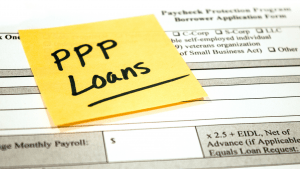The three biggest social media marketing mistakes small businesses make might surprise you. In fact, two of them seem contradictory, that is, once you learn their details. But, knowing about these unforced errors can help a business create brand awareness, reach a larger audience, and sell more. Read on to learn about the three biggest social media marketing mistakes small businesses make.
The Importance of Social Media Marketing
Social media marketing is an obvious necessity in today’s business environment. Consumers get most of their news and information from social media. It’s where 3 out of 5 consumers discover new products and services and/or are repetitively exposed to them on a regular basis. It’s also the place where literally hundreds of millions of people go day after day.
Most modern businesses understand the importance of using social media to promote their brand and interact with consumers. Indeed, social media is at the core of many companies’ digital strategy, often delivering measurable results in terms of sales, leads and customer service. That said, there are many social media mistakes that we see time and time again: strategic errors that leave leads on the table and opportunities unexplored. —Forbes.com
With such wide reach and exponential potential, it’s no wonder social media marketing is the preferred medium of the largest international brands. Small businesses can also tap into this powerful branding tool, by building a presence. However, it must be done with an effective strategy.
3 Biggest Social Media Marketing Mistakes
The lack of strategy, unsurprisingly, is where too many businesses go wrong. Just having a presence and posting updates isn’t enough. It is very important not to commit these three huge social media marketing mistakes, too:
- Posting too little. If there’s one rule small businesses should follow in regards to social media marketing, it is consistency. Too many businesses start off posting regularly, only to update their pages less and less. Eventually, updates are sporadic, becoming few and far between. Hence, people don’t encounter them often enough and that’s a really bad thing.
- Posting too much. On the other hand, some businesses over do it. They post so frequently, there’s no discernible message or value to their target audience. These businesses make the mistake of confusing quantity for quality, and that too, is a huge mistake. Posting for the sake of it usually only serves to irritate people, not endear them to the brand.
- Not effectively branding. The last point plays into this one. It’s a well-known fact in the digital marketing world people often forget where they see things on social media, more particularly, not remembering the source. In other words, they might recall a product or service, but can’t recall the platform on which they saw it, and more importantly, which business it posted the content. Therefore, it’s imperative to have a consistent brand presence so people associate your business with its products and services.
What other mistakes would you advise small businesses to avoid? Please share your thoughts and experiences by commenting!
Interested in learning more about business? Then just visit Waters Business Consulting Group.




